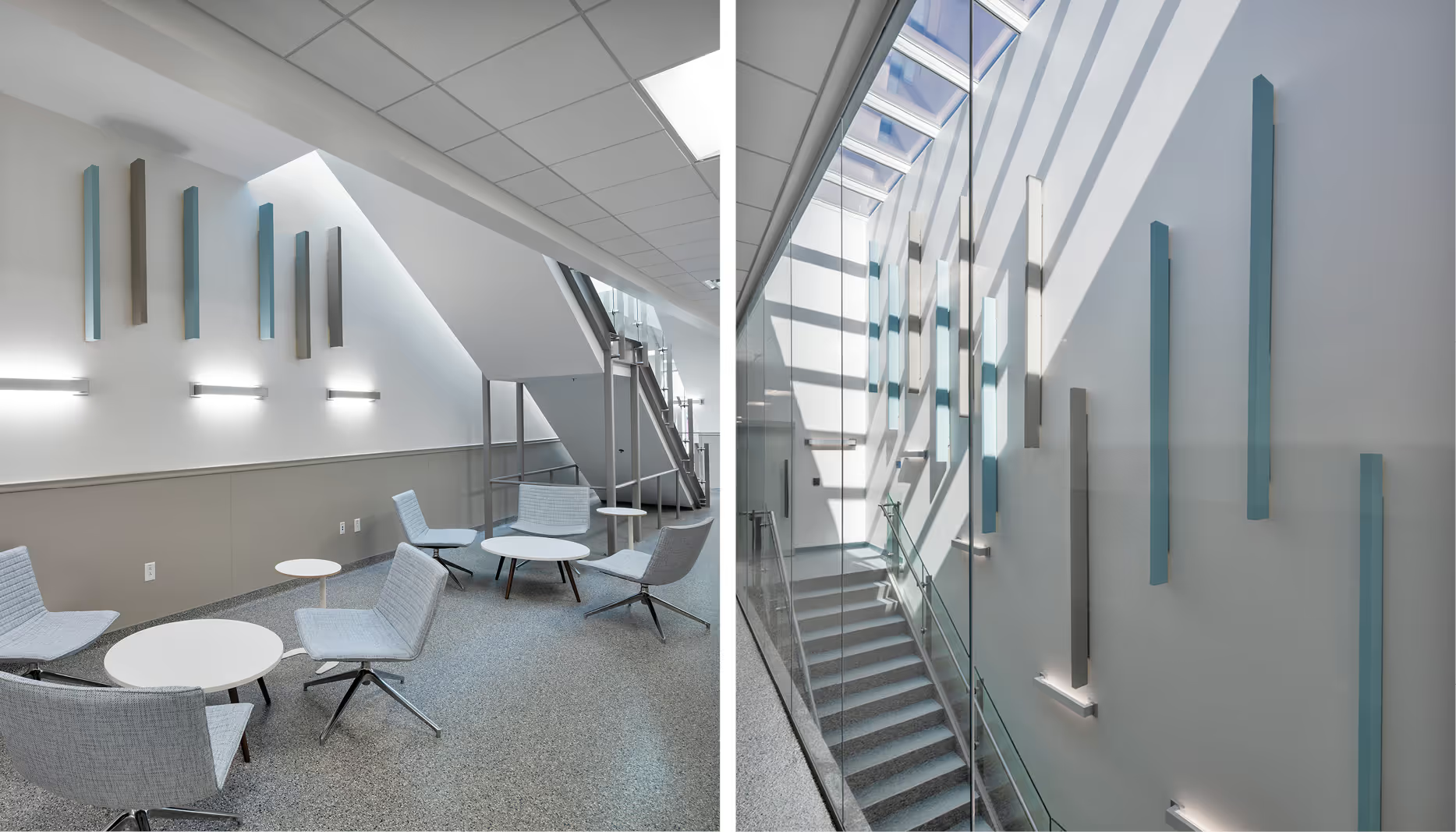
Raleigh Law Enforcement Training Center
Population growth across North Carolina's capital region drove a critical need for expanded law enforcement training capacity. The 60,000-square-foot training complex replaced a spatially constrained 12,000-square-foot facility that limited the department to single-track training programs. Site selection balanced proximity to existing police facilities with space for future expansion.
Program Development
The building program took shape through extensive sessions with training officers, who identified limitations in the previous facility's ability to simulate real-world scenarios. The resulting design positions eight 900-square-foot classrooms and four 1,200-square-foot tactical training rooms along a double-loaded corridor. This layout allows instructors to transition between classroom theory and practical exercises while maintaining appropriate acoustic separation.
Technical Requirements and Solutions
Achieving IBC occupancy classification E required integrating specialized systems throughout. The defensive tactics room features a floating floor system with 2-inch shock absorption padding overlaid on isolated concrete to prevent impact noise transmission. Movable wall panels in scenario rooms mount on ceiling tracks, allowing rapid reconfiguration between training sessions while maintaining required fire separations.
Mechanical Systems
The mechanical design confronted dual challenges: maintaining precise environmental control for sensitive training equipment while minimizing energy consumption. The solution pairs 45 closed-loop geothermal wells with a dedicated outdoor air system. This combination delivers 76-degree supply air at 30 percent relative humidity to IT-intensive spaces while using 25 percent less energy than conventional systems.
Water Conservation
Water conservation measures respond to Raleigh's recurring drought conditions. Low-flow fixtures, dual-flush toilets, and condensate recovery reduce potable water demand by 80 percent compared to baseline. The condensate system alone captures 850,000 gallons annually for non-potable uses.
Museum Integration
At the facility's entrance, the Cassandra Deck-Brown Museum required specialized environmental controls to preserve artifacts. Display cases maintain 45 percent relative humidity through localized systems, while LED fiber optic lighting eliminates UV exposure. Modular wall systems accommodate changing exhibits without compromising the building envelope.
The museum's significance has deepened since opening. As Chief Deck-Brown noted, "It tells our story...Despite the dark history policing has in this country, there is a lot of great work that comes every single day to make a difference in the lives of others." The space connects recruits to departmental history while offering citizens insights into law enforcement's development over time.
Security Design
Physical security presented complex coordination challenges. The design team integrated five distinct security zones while maintaining clear emergency egress paths. Biometric access controls and programmable parameters enable concurrent use by recruits, active officers, and civilian staff. Site planning separated secure and public parking areas while preserving sight lines for natural surveillance.
Sustainability Achievements
The complex achieved LEED Silver certification through accumulated features meeting specific credit requirements. Beyond certification, operational data shows the building performing 15 percent better than energy model projections after three years of occupancy.
Enhanced Training Capabilities
The design process uncovered opportunities to expand indoor training capabilities. By increasing clear heights to 24 feet in tactical areas and adding ceiling-mounted anchor points, the space now accommodates vertical rescue training previously limited to outdoor facilities.
The design team collaborated with Raleigh's training division throughout development. This partnership identified opportunities to exceed minimum DOJ standards where improved functionality justified additional investment. For example, simulation rooms received enhanced audiovisual systems allowing remote observation and digital recording of training scenarios.
The Raleigh Law Enforcement Training Center demonstrates how performance-driven design enhances departmental capabilities. Through analysis of training needs, integration of appropriate systems, and attention to long-term operations, the facility advances the department's mission while strengthening community connections.






























